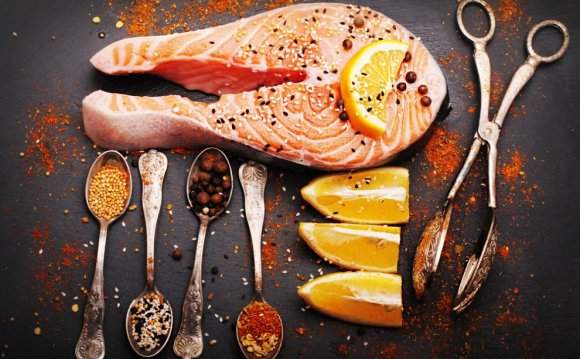
| Building Balanced Muscle Tone-Naturally
The Blood Type Diet offers much more than weight loss. And achieving your body's ideal weight is more than just losing fat. With the Blood Type Diet, losing weight may be a happy side effect for some but it is not the main point. The primary weight-related benefit is that this diet helps your body find and maintain it's ideal weight. For some, this means losing weight, naturally. For others, this may involve gaining or retaining muscle. Achieving a healthy weight is about achieving the right balance of lean muscle to healthy body fat. Did you know that just having more muscle causes your body to burn more calories while at rest than does being thinner with less muscle? Is Muscle Loss Inevitable with Age?As we age, we tend to lose muscle-which is much more likely if you're not eating a diet rich in muscle-building nutrients right for your blood type. One study revealed that women over the age of 35, for example, lose muscle mass at a rate of roughly one-third to one-half a pound each year. Much of the research done on the relationship between aging and muscle loss often leaves diet out of the equation. Some studies go as far as assuming no relationship between muscle proteins and the raw materials from our diets that continually feed and build those muscles. As the muscle protein content of muscles diminish the muscles become fatigued more easily. This leads to a sedentary lifestyle. If this slow-down in activity-and hence, muscle metabolism-isn't reversed through changes in diet and exercise, then excessive muscle loss is the result. When our body is working properly, we build muscle mass naturally through daily activity and regular exercise-combined with diet. Keys to Building and Maintaining MuscleOne of the body's natural cycles involves occasionally breaking muscle proteins down to be used for energy, a process called "protein turnover." The body is in a continuous cycle of anabolic (muscle building) and catabolic (breaking muscle down). The body seeks a natural balance between these two alternating processes-with a preference towards anabolic. We literally feed and encourage either of these states mostly through the dietary choices we make. Many people on typical "weight loss" diets are under the mistaken impression that eating "light" meals, or eating fewer and smaller meals during the day can help them lose weight. The reverse is actually true. Studies reveal that the weight one loses along with any temporary fat loss is typically muscle. Severely-curtailed low-calorie diets can cause the body to go into "starvation and conservation" mode. These kinds of diets or even long periods during the day without eating can actually create a catabolic state of muscle burning to conserve energy. As Dr. D'Adamo explains, muscle is metabolically active tissue, requiring a great deal of caloric energy just to maintain it. "Maintaining a high percentage of active tissue is particularly important when you are trying to lose weight. With diets that severely restrict calories, you may lose weight but also lose muscle tissue. Since these diets do nothing to increase active tissue mass, your metabolic rate remains unchanged or declines, leaving you predisposed to regain the weight you lost (or perhaps more) as soon as you resume normal eating." This is due to several reasons: With fewer meals, the body slows its metabolism, making the food we do eat harder to metabolize. The more frequent, smaller, nutrient-rich meals we eat, the more efficient the metabolism becomes! In fact, this has been measured. Using our resting (basal) metabolism as the starting point, the additional caloric expenditure that it takes to digest, absorb, and process the food you eat is called "The Thermic Effect of Feeding (TEF)." Not surprisingly, different foods have different effects on TEF, which gives us just one more reason knowing the best foods for your blood type. One significant study demonstrated that during the normal six-hour resting metabolism period, we typically burn about 270 calories. When eating a single meal of carbohydrates alone or fat alone, the energy burned during this six-hour period reached 290 calories (an additional 20 calories). Interestingly, when eating protein alone the subjects in this study burned 310 calories during this six hour period (an additional 40 calories). It appears, protein alone had double the thermogenic potential over fat or carbs alone! Eat More Protein More OftenThe body requires protein to maintain and build muscle. How much protein is right for you? Your Blood Type Diet is the ideal guide to not only the perfect protein sources ideally suited for you, but also the ideal amounts. Refer to the diet charts in Live Right 4 Your Type. Generally, studies show that smaller meals, spaced 2-3 hours apart, with a quality protein source in each mini-meal, provides the muscle tissue the nutrition they require to thrive. Exercise RightBut don't overdo it. We know exercise and weight resistance is a key to fat loss and muscle building. You may have a great exercise routine-but do you eat to exercise? Do your meals and snacks support your exercise, or fight it? Your body needs food energy when you exercise or it will actually burn muscle as you work out, which seems to defeat the purpose. Be sure your body has plenty of high quality carbohydrate fuel (for energy) and protein fuel to support your workouts-with food sources right for your type. In addition to complex carbs, try these tips for exercise energy: For nutrients to build muscle Want to Gain Weight?Dr. D'Adamo explains that gaining healthy weight means building muscle. Following your Blood Type Diet on its own will provide the proper muscle-building raw materials for you if your routine includes progressive weight lifting two or three times per week, working the upper body in one session and the lower body in the next. But what does Blood Type have to do with exercise?Elevated catecholamines (adrenaline and nor-adrenaline) are more characteristic... |
The BMI is a useful indicator of weight status in most people, but for certain folks, such as athletes, it is too simplistic, as it assumes all extra weight is fat - however in athletes the extra weight is often muscle instead. Adding a waist circumference gives a bit more clarity to the picture, since waist girth is almost always fatty tissue. You may also go to your doctor, or to your gym and have your percent body fat measured. This will tell you how much of your body is composed of lean muscle and bone versus fat. Both of these are good indicators of weight as a health risk.
INTERESTING VIDEO












